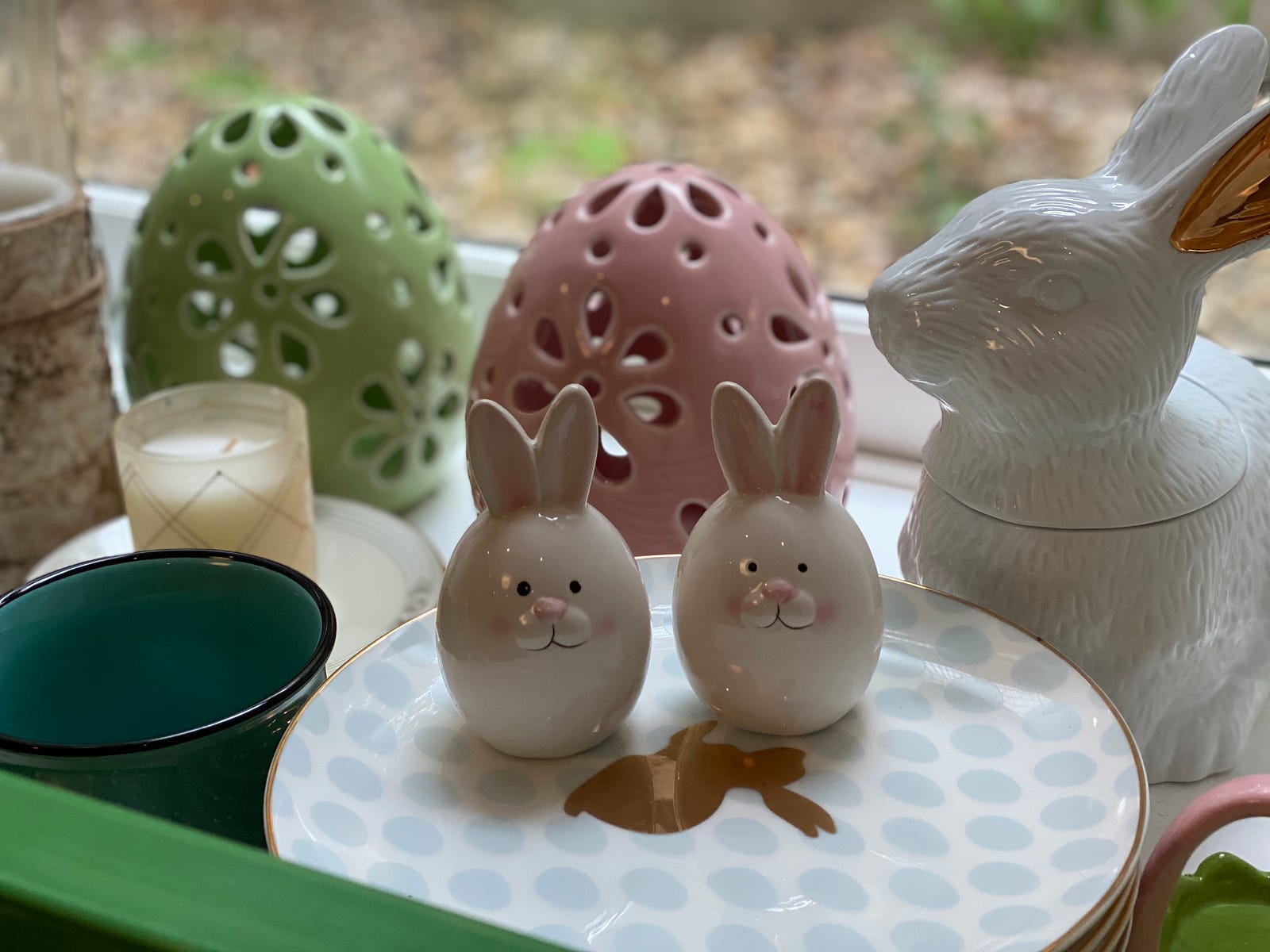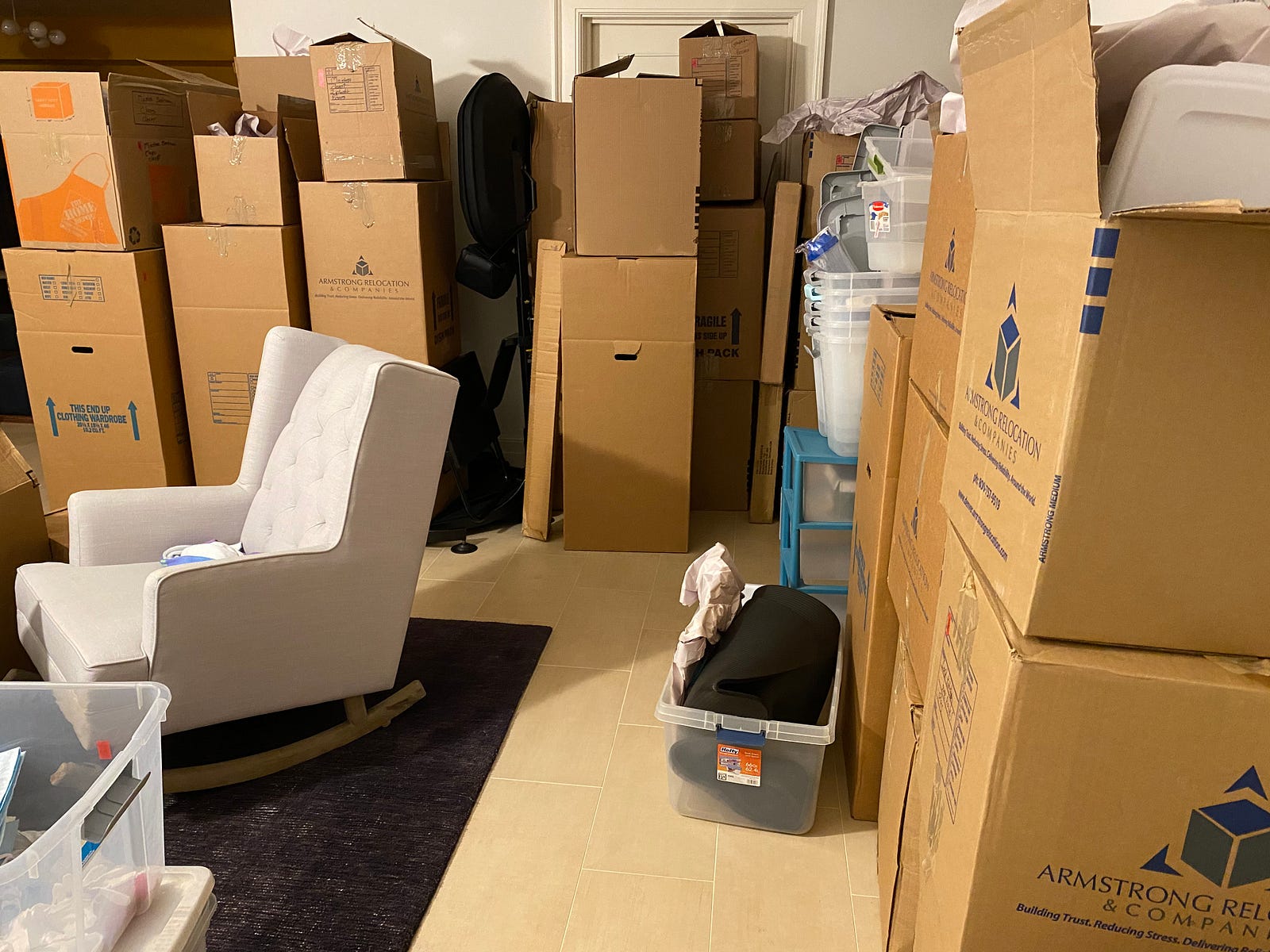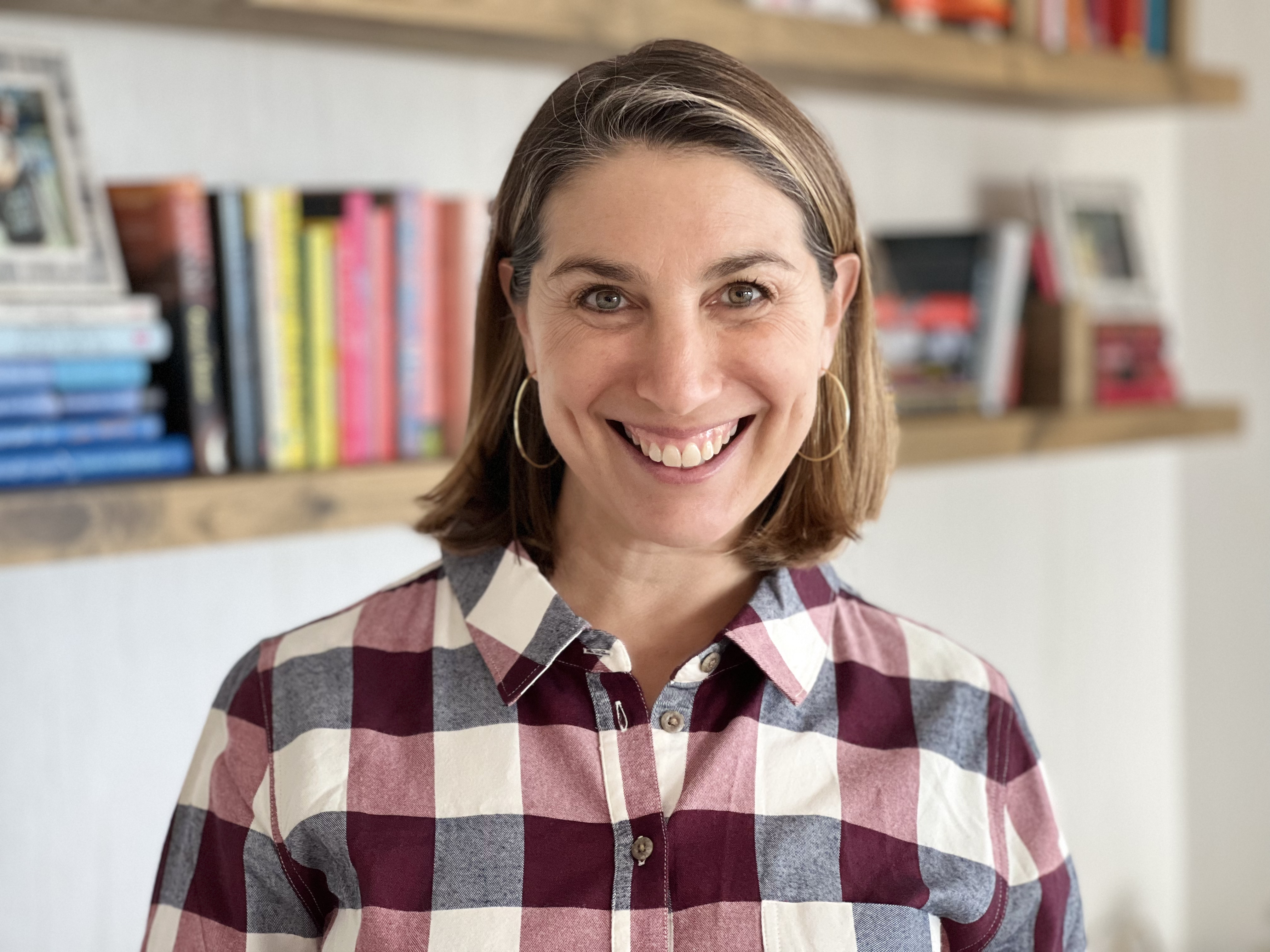What I Learned from Unpacking
Originally published on Moms Don’t Have Time to Write.
“Mom! Why is there still salt and pepper in the salt and pepper shakers?”
My six-year-old son is holding two ceramic bunnies that we’ve just extricated from thick, white packing paper. He tips them over again, just to confirm that the white and black sandlike spices are indeed spilling out onto the carpet. He laughs, incredulous.
“Stop,” I say gently, reaching out for his soft, delicious hands and pausing the sprinkling of sandy dust.
We’re down in the basement. Heavy rain, relentless for two straight days, pounds the roof overhead, the pitter patter of splatter the soundtrack of our soppy Memorial Day weekend.

An hour earlier, he’d snuggled beside me while I was cozy reading on the couch and asked if we could finally unpack “Treats” and “Nene’s” boxes, the ones that had been standing sentry in our guest room downstairs since early last September. The boxes contained everything from his step-grandmother and step-great-grandmother’s apartment. Susan Felice Owens and Marie Felice. My husband’s mom and grandmother. They’d been living together in Charlotte, NC, when they’d both caught Covid and died six weeks apart.
“Can we, Mom? Let’s make it into a real room so their souls can come visit,” he said.
I set my book down.
Once my husband, Kyle, and his sister, Stefanie, gave us the okay, we got started.
Now we are standing among towering boxes filled with the artifacts of two lives. Actually, as we soon discover, more than two lives. Mixed in with the everyday stuff of Treats and Nene’s days, like their bedside clocks, notepads, screwdrivers, potholders and hand soaps, are archives of more ghosts. Kyle’s late grandfather’s belongings including newspapers saved from the Normandy invasion, his stamp collection, and an American flag are folded neatly into a plastic container.
Two of their late dogs’ ashes are in small, cherry wood boxes, each with a picture of the beloved canine on top. When I unwrap those and put them on the bed, I have to stop and run to the bathroom to wash away the dust from my hands.

What had been a place for my four kids to play hide ’n seek over the past nine months is slowly turning into what looks like a yard sale. Or, perhaps, Party City. Clearly, Treats and Nene knew how to celebrate life. Three boxes of Christmas ornaments and a knee-high Santa mingle with a bevy of Easter bunnies, a squat, hand-painted Halloween pumpkin, and Thanksgiving turkeys. Celebration overtook function in what they saved, reflecting their joie de vivre.

My son tips the salt shaker over again, a glint in his eye.
“Mom, why?”
I take a deep breath.
“Well, love, when you die, you don’t know you’re about to die. It happens all of a sudden. One minute you’re alive and then the next minute, you’re not. You don’t usually have time to empty out your salt and pepper shakers.”
He nods, satisfied with my answer.
“Are you about to die?”
“No, I’m healthy. I’m young. I’m not going to die any time soon. Don’t worry. Now go add these to the fragile pile.”
He walks toward the window, a bunny in each hand.
I feel like a liar. I can’t guarantee my lifespan. No one can. I could get hit by a bus that afternoon. I could have a heart attack. Anything could happen. My own experience with Covid knocked me into bed for nine days, but what if I hadn’t survived? The average, ever-extending lifespan statistics mean nothing when mixed in with the randomness of life. But how can I explain that? A child feeling like his mom’s life — and his own — could end at any minute would never be able to sleep at night.
We continue unpacking. Unwrapping. I am a whirling dervish, a Tasmanian devil in pajamas, plowing through each box like a dog at dinnertime. I must finish. I must keep going.
I pull out purse after purse, making a pile next to the bed, but then as I extract a heavier one from the box, I pause. I can feel its heft and hear its telltale jangles before I see its contents. I peer reluctantly inside. Yes. It’s the purse Treats must have been carrying as she went to the hospital to say goodbye to her mother. A wallet. Scrunched up tissues. A mask and plastic gloves. Her mother’s reading glasses with a Covid positive tag dangling off the side. Cough drops. A lipstick. Sunglasses. A half-empty pack of gum. Loose coins.
“Mom, are you going to cry?” My little one asks, suddenly beside me and scanning my eyes for clues. He can read my emotions like they’re posted on a billboard. “Did you know when other people start crying, it makes me cry, too?”
“I’m okay,” I say. “I’m just a little sad.”
He hugs me around my waist. We stand like that for a while, amid the ancient photo albums, the horse ribbons, the 1980s Broncos baseball hats, the piles and piles of Treats’ shoe collection (who knew?), the half-rinsed pans, the toaster with the crumbs spilling out, the hamper with clothes still in it.
Life, interrupted.
Frozen forever at a random moment in time.
The stuff of life is, of course, just stuff. What matters in the end are the photos, the handwritten recipes, the birthday cards with meaningful notes, the mementos. Not the shoes, although they were pretty fabulous.
By nightfall, we finish our job. All the objects are freed from hibernation, out in the air again. I call out to my son, now playing with a friend in the next room.
“It’s all done! Come see!”
His eyes light up in excitement.
“The room is ready?”
He runs in. He rarely walks. He runs everywhere. He scans the room. The window ledge overflows with figurines. Mugs, plates, and vases cover the floor. Books tower high in a corner. Kitchen gadgets rest next to framed photos on the floor. Dog beds. Hand-knitted, multi-colored blankets. Holiday ornaments. Measuring cups.

He smiles and walks around carefully, silently, through the belongings.
Then, he looks up and me and nods.
“Now we can play.”


